Round-leaved Mallow
Round-leaved mallow is a prolific weed in gardens, farmyards, shelterbelts, and undeveloped areas. In cultivated crops, it can be very competitive and spreads quickly by seed.
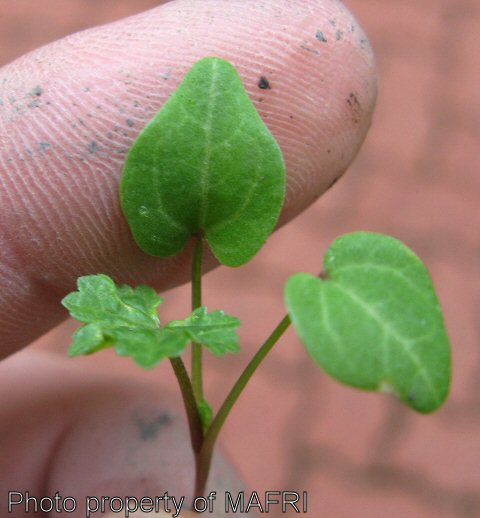 click to enlarge |
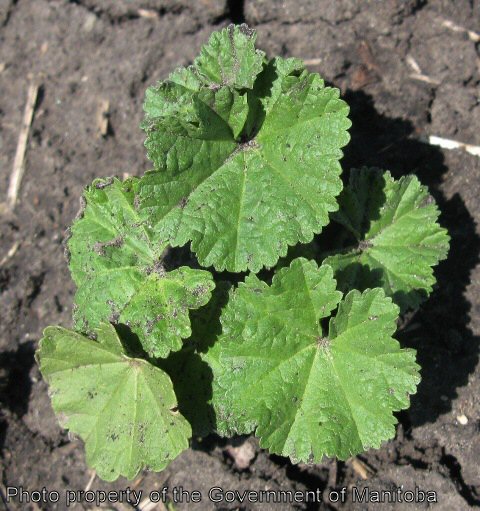 |
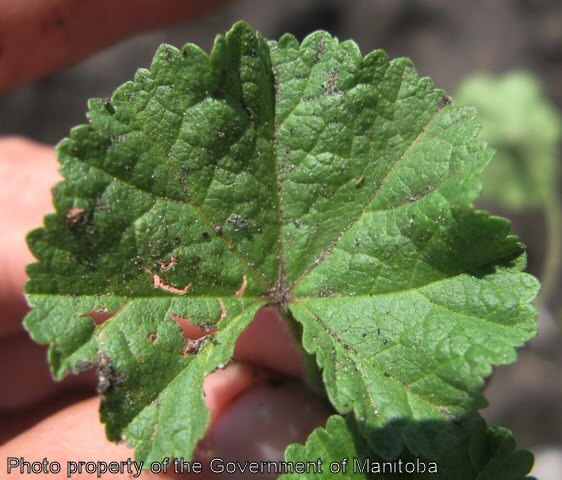 |
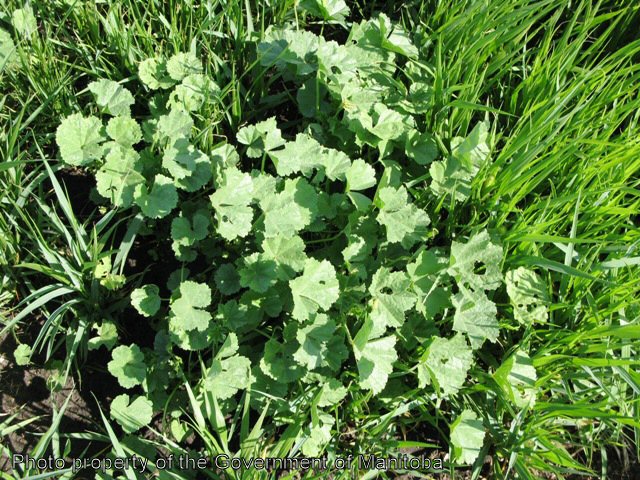 |
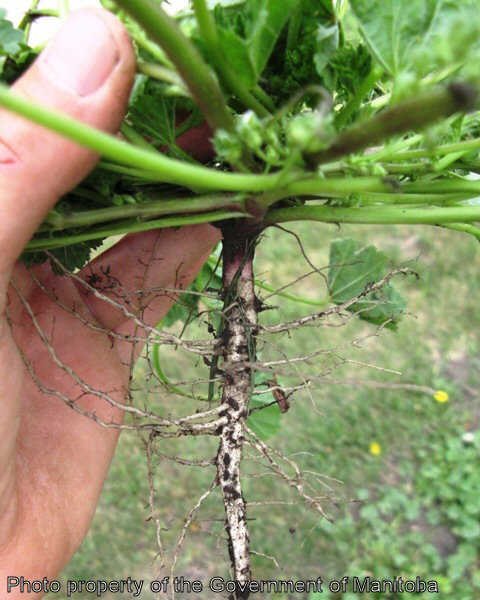 |
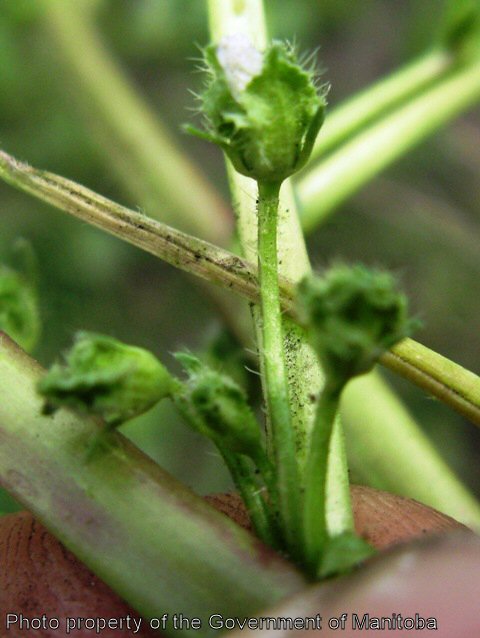 |
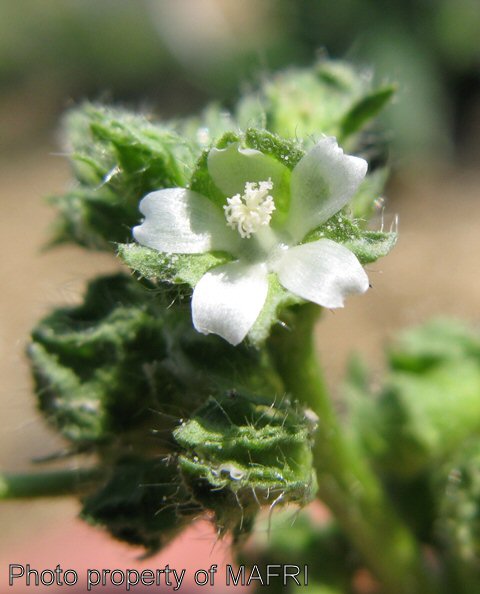 |
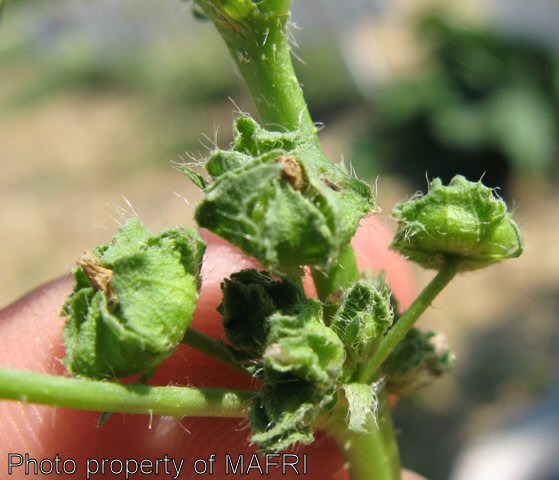 |
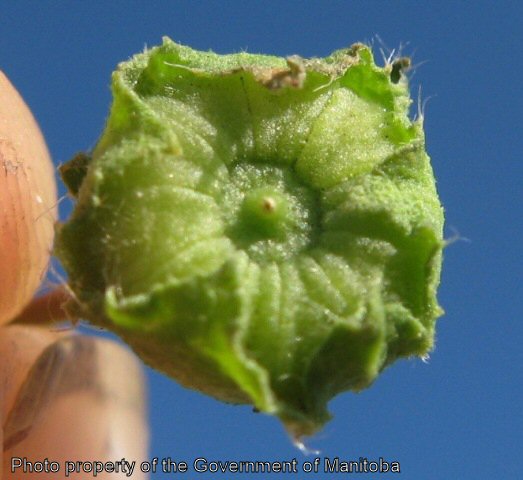 |
Biology
This weed is considered to be an annual to a short-lived perennial, reproducing by seed. The stems are usually prostrate and up to 1 metre (1 yd.) long. The leaves are alternate, one per node and roughly circular in outline, 2-5 cm (1-2 in.) in diameter, have wavy margins, and are shallowly 5-7 lobed and long stalked. The flowers are inconspicuous, pale-purple to white, 5 mm (1/4 in.) across, and are present in groups of 1-3 at the bases of the leaf stalks. The seeds are arranged in a ring, separating like slices of an orange.
The hard seed coat enables this weed to remain dormant in the soil for up to 100 years. Seeds germinate in moist soils late in the spring, optimally at temperatures of 15-20 degrees C (60-68 degrees F), growing throughout the summer.
Scouting Techniques
Take a minimum of 20 weed counts across the field. Check field edges, old farmyards or areas where manure has been spread, for patches of this weed.
Effects On Crop Quality
Remaining green well into the fall, mats of weed debris can clog farm equipment. Green matter and seeds can result in dockage.
Threshold/Yield Loss
This weed can cause significant yield loss in poorly competitive crops such as flax. Twenty mallow plants per square metre (sq. yd.) can reduce flax yields by 10-30%. In wheat, yield losses are generally lower and much more variable. One report stated that densities of up to 237 plants per square metre (sq. yd.) caused wheat yield losses of up to 15%.
Control Tips
Tillage can be used to control the short-lived perennial form of the weed in the fall and early spring. There is usually no benefit to tilling summer annual plants in the fall, as they have already set seed and won't survive the winter.
Competitive crops such as cereals and canola tend to keep this weed in check, especially when seeded heavy. Avoid crops like flax that are uncompetitive and don't have herbicides available for control of round-leaved mallow.
Herbicide options for control of round-leaved mallow are limited and not highly effective in most crops.
